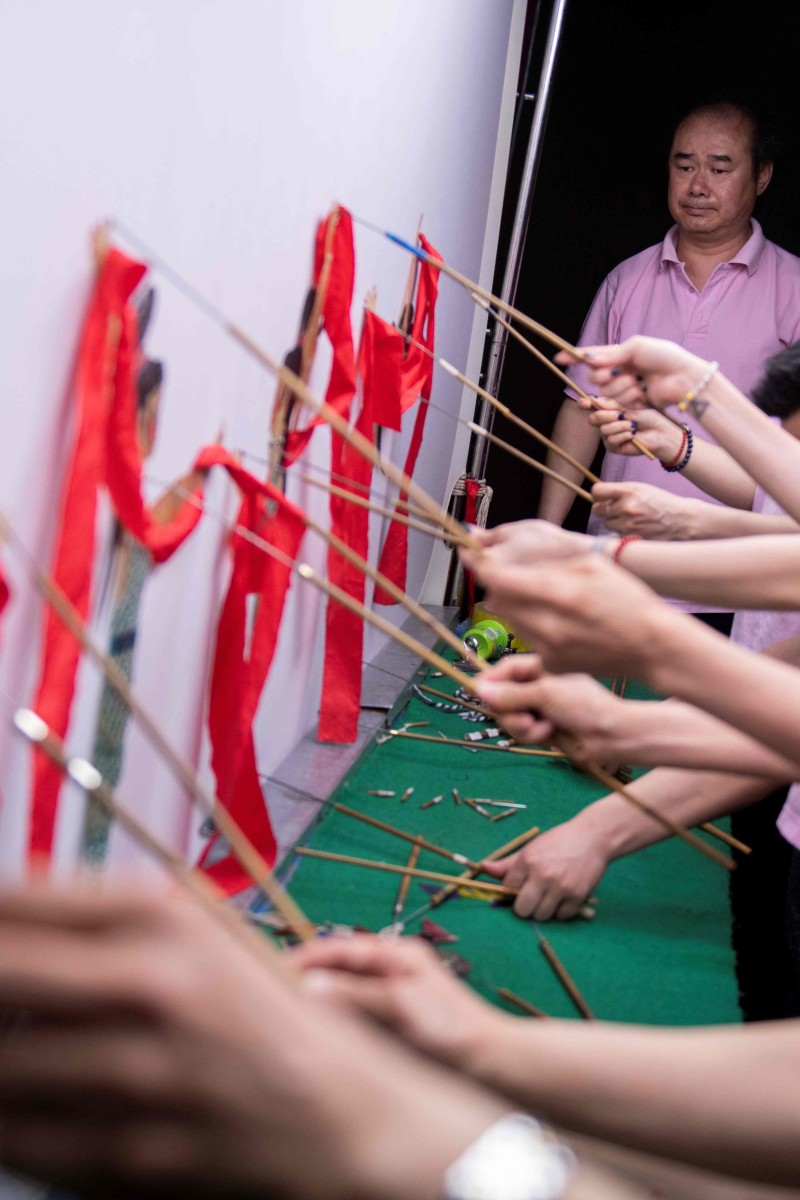
Master puppeteers have teamed up with a group of youngsters to pass on the ancient storytelling technique
 The Beijing Shadow Show Troupe puppet master Lu Baogang (background) watches his puppeteers work during a performance for schoolchildren in Beijing.
The Beijing Shadow Show Troupe puppet master Lu Baogang (background) watches his puppeteers work during a performance for schoolchildren in Beijing. Shadow puppets flitting across screens and reliving age old stories have fascinated Chinese people for some 2,000 years, but falling audiences mean troupes are having to be creative to stay on the stage.
On a translucent screen in a Beijing classroom, a child with a cosmic ring takes on the son of the dragon king, attacking him with huge thrusts of his lance.
Behind the screen, puppeteers use rods to move the figures, to the joy of the schoolchildren watching.
Hong Kong Culture Festival finds the best way to share city’s intangible heritage is with technology
The legends of the past are the bedrock of shadow theatre – a tradition still popular in the countryside, though it has lost much ground in large cities over the last few decades.
Shadow theatre was celebrated up until the 1960s when it was targeted as part of the Cultural Revolution. It had something of a comeback in the 1980s and in 2011 was included on Unesco’s Intangible Cultural Heritage list.
For the Chinese, the show is the forerunner of cinema – in the Chinese language the word “cinema” literally means “electric shadow”.
How a new theatre helped HK students improve their English skills and taught them about mentorship
With video games, film and TV now competing for viewers glued to their smartphones, shadow theatre is slowly losing its audience, and performers are struggling to keep their heads above water.
Wiping his forehead after his furious on-stage battle, Lu Baobang – one of the last puppeteers of the old generation – is worried there is no one to replace him when he retires.
“We can’t offer reasonable living standards to young apprentices,” said Lu, who descends from a large family that developed one of the main schools of shadow theatre in Beijing.
A ray of hope
While the theatre struggles to attract young peoples’ interest, a troupe in a Beijing suburb – whose performers have an average age of 22 – has managed to survive.
It is made up of 60 or so puppeteers with dwarfism, a condition that causes people to be abnormally short, who present themselves as having an average height of 1.26 metres.
Jin Xinchun is one of them. He was struggling to find work several years ago, before he discovered the troupe online and moved to Beijing to join it where he was employed as a puppet maker.
“I am always happy to cut old leather to make beautiful puppets. They are my babies!”, Jin said.
Wang Xi, also a puppeteer, founded the troupe with her husband in 2008 after meeting with the national association of dwarves.
“They had trouble finding work. And it was hard for us to find successors. Our collaboration is like two drawbacks that turned out to a be a plus!”
The puppeteers now perform regularly in schools.
But Wang Xi said she is nervous about the future: “Our masters are all older than 80 and they obviously won’t be able to go on stage in 10 years.”
State support is key to keeping shadow theatre alive, Lu said.
“The government is aware of the importance of traditional culture, what we need now are concrete measures,” he said.
“This art will have no future if we don’t give young people hope.”